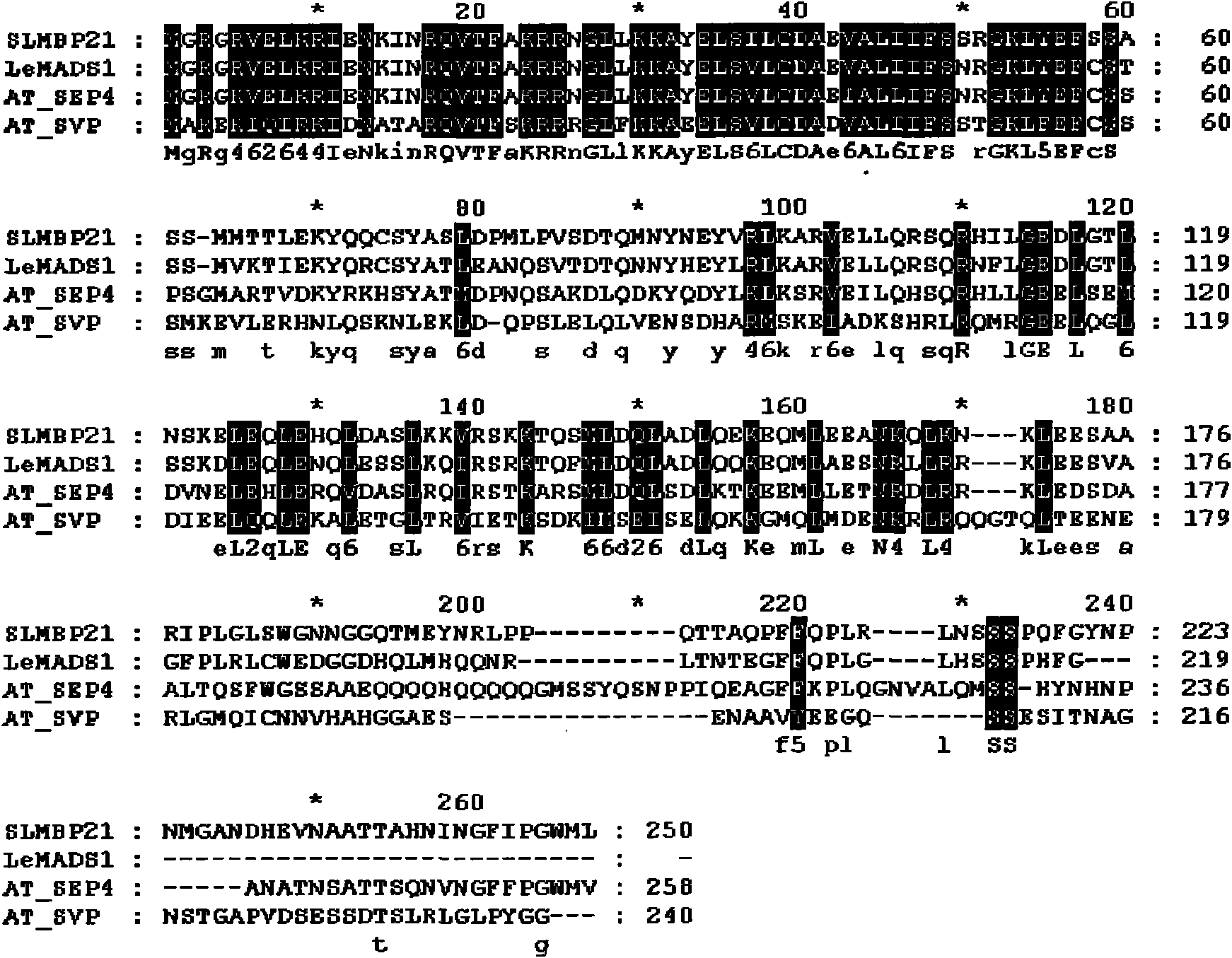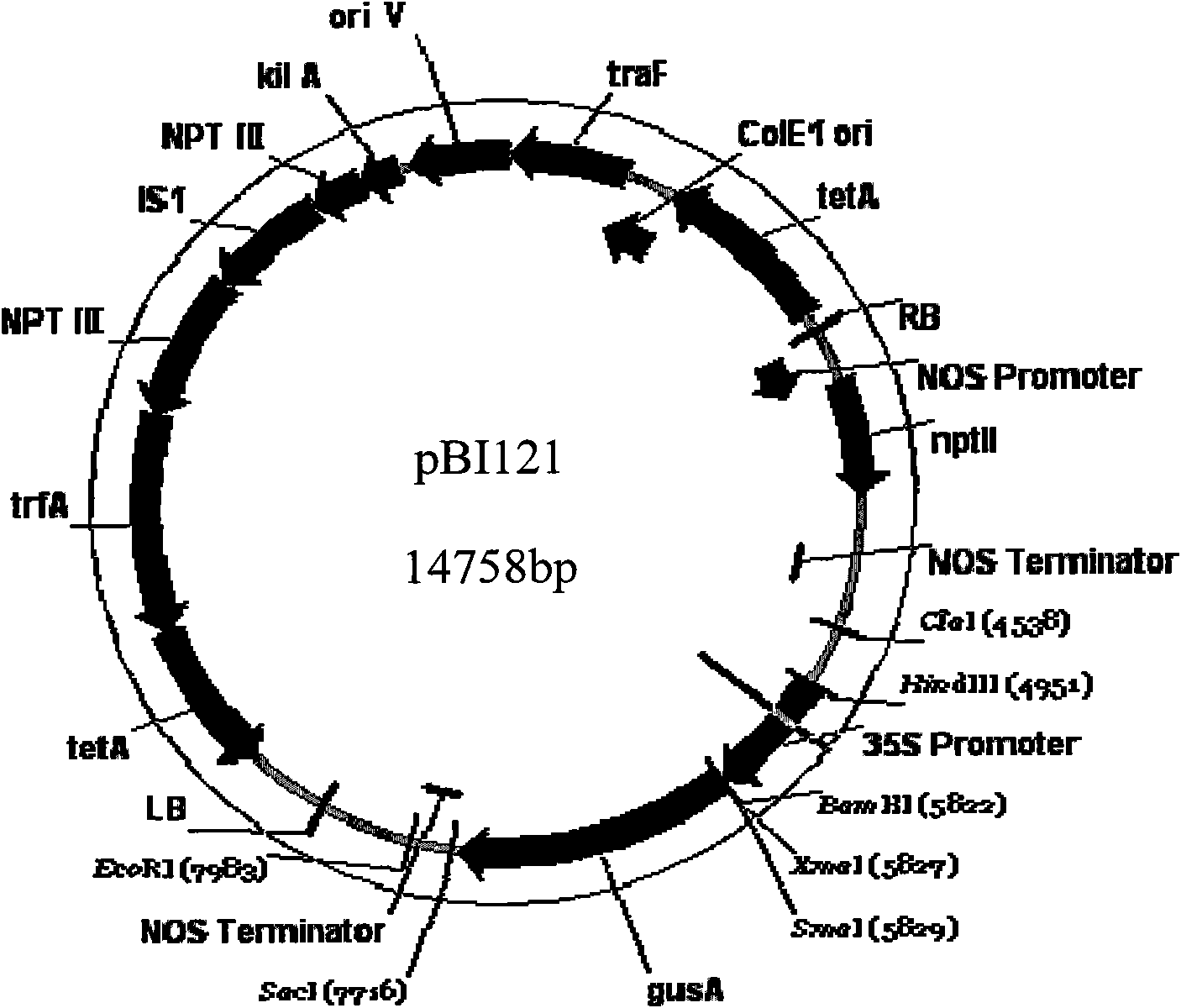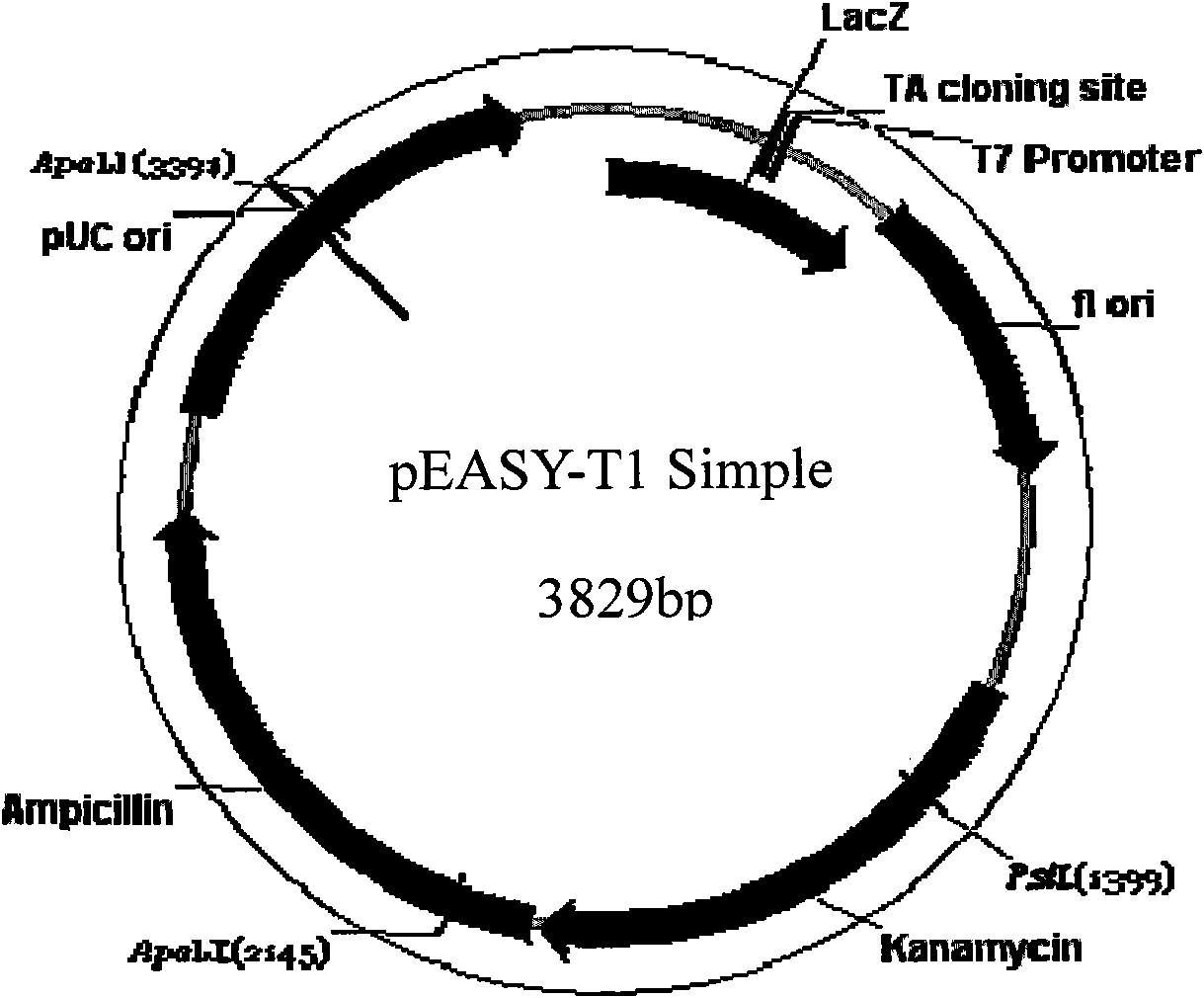Tomato gene SLMBP21 and application thereof
A tomato and gene technology, applied in the field of genetic engineering, can solve problems such as unknown functions and different functions, and achieve the effect of good application value
- Summary
- Abstract
- Description
- Claims
- Application Information
AI Technical Summary
Problems solved by technology
Method used
Image
Examples
Embodiment 1
[0030] Example 1 Cloning of full-length tomato SLMBP21 gene
[0031] 1) Using a forward primer with a nucleotide sequence as shown in SEQ ID No.3 and a reverse primer with a nucleotide sequence as shown in SEQ ID No.4, clone SLMBP21 from the pedicel cDNA of tomato Zhongshu No. 4 The sequence of the coding region of the gene;
[0032] PCR program: 94°C, 5 minutes; 94°C, 30 seconds; 55°C, 30 seconds; 72°C, 45 seconds; repeat 35 times; 72°C, 10 minutes.
[0033] PCR system: 2×EasyTaq PCR SuperMix (Quanshijin Company) 25μl;
[0034] Forward primer (10μM) 2μl;
[0035] Reverse primer (10μM) 2μl;
[0036] DNA template 5μl;
[0037] Double distilled water to make up 50μl.
[0038]The above PCR product was directly cloned and connected to pEASY-T1Simple according to the TA cloning method (such as image 3 shown); the ligation product was transformed into Escherichia coli DH5α and multiplied in it, and the positive clone was sequenced and screened to obtain the sequence;
[0039...
Embodiment 2
[0057] Example 2 Sequence Structure Analysis of Tomato SLMBP21 Protein
[0058] Tomato SLMBP21 has the characteristic sequence region of MADS-box family proteins: MADS region (about the first 60 amino acids), which has 69% similarity with SEP4 protein sequence in Arabidopsis and 84% similarity with LeMADS1 protein sequence in tomato . The result is as figure 1 shown.
Embodiment 3
[0059] Example 3: Sequence structure analysis of tomato SLMBP21 protein
[0060] The results of phylogenetic analysis showed that SLMBP21 belonged to the SEP subfamily, and belonged to the same branch of the evolutionary tree as SEP1 / 2 / 3 / 4 in Arabidopsis and Ph FBP2 / 4 / 5 / 9 / 23 in Petunia. Other members of this subfamily in tomato include TM5, TM29, RIN and LeMADS1.
PUM
 Login to View More
Login to View More Abstract
Description
Claims
Application Information
 Login to View More
Login to View More - R&D
- Intellectual Property
- Life Sciences
- Materials
- Tech Scout
- Unparalleled Data Quality
- Higher Quality Content
- 60% Fewer Hallucinations
Browse by: Latest US Patents, China's latest patents, Technical Efficacy Thesaurus, Application Domain, Technology Topic, Popular Technical Reports.
© 2025 PatSnap. All rights reserved.Legal|Privacy policy|Modern Slavery Act Transparency Statement|Sitemap|About US| Contact US: help@patsnap.com



